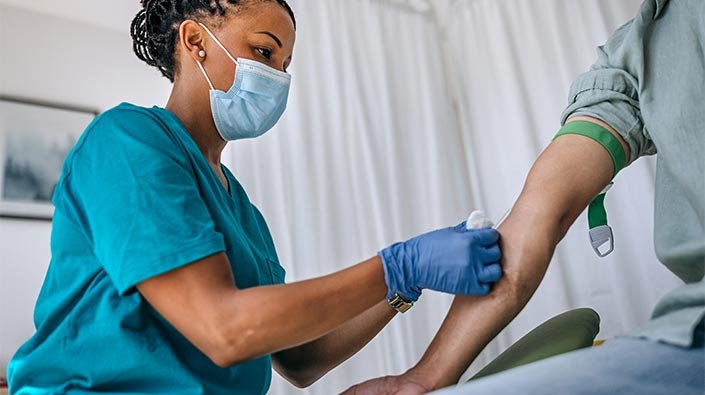Addressing Challenges in Managing Pediatric-Specific Equipment: Strategies for Hospitals
Summary
- Hospitals face challenges in ensuring an adequate supply of pediatric-specific equipment for nurse practitioners specializing in child health due to budget constraints and limited resources.
- Proper maintenance of pediatric-specific equipment is crucial for ensuring the safety and well-being of young patients, but hospitals often struggle with ensuring regular maintenance schedules and training staff on equipment usage.
- Efforts to address these challenges include implementing inventory management systems, investing in staff training programs, and collaborating with equipment suppliers to ensure timely maintenance and replacement of pediatric-specific equipment.
The Importance of Pediatric-Specific Equipment
When it comes to providing healthcare services to pediatric patients, having the right equipment is crucial. Pediatric-specific equipment is specially designed to meet the unique needs of children, from newborns to adolescents. This equipment is essential for diagnosing, monitoring, and treating young patients effectively and safely. Without access to pediatric-specific equipment, nurse practitioners specializing in child health may struggle to provide the level of care that young patients require.
Challenges in Ensuring an Adequate Supply
Budget Constraints
One of the main challenges hospitals face in ensuring an adequate supply of pediatric-specific equipment is budget constraints. Healthcare organizations often operate on tight budgets, and purchasing specialized equipment for pediatric patients can be costly. As a result, hospitals may struggle to acquire the necessary equipment to meet the needs of nurse practitioners specializing in child health.
Limited Resources
In addition to budget constraints, hospitals also face challenges related to limited resources. From limited storage space to a lack of dedicated staff to oversee equipment inventory and maintenance, healthcare organizations may find it difficult to ensure that nurse practitioners have access to the pediatric-specific equipment they need. This can result in delays in care delivery and potentially compromise patient outcomes.
Proper Maintenance of Pediatric-Specific Equipment
Ensuring the proper maintenance of pediatric-specific equipment is essential for the safety and well-being of young patients. Regular maintenance helps to identify and address any issues with the equipment promptly, reducing the risk of malfunctions or failures during patient care. Additionally, properly maintained equipment can help nurse practitioners deliver quality care and improve patient outcomes.
Challenges in Maintaining Pediatric-Specific Equipment
Regular Maintenance Schedules
One of the challenges hospitals face in maintaining pediatric-specific equipment is establishing and adhering to regular maintenance schedules. With a large inventory of equipment to manage, healthcare organizations may struggle to prioritize maintenance tasks and ensure that all equipment receives the necessary attention. This can lead to delays in maintenance and potential equipment failures.
Staff Training
Another challenge hospitals face is training staff on the proper usage and maintenance of pediatric-specific equipment. Nurse practitioners specializing in child health need to be knowledgeable about how to operate the equipment safely and effectively. However, without adequate training programs in place, staff may struggle to use the equipment correctly, leading to potential safety risks for patients.
Addressing Challenges in Equipment Management
Implementing Inventory Management Systems
One way hospitals can address the challenges of ensuring an adequate supply and proper maintenance of pediatric-specific equipment is by implementing inventory management systems. These systems can help healthcare organizations track equipment usage, monitor maintenance schedules, and identify when equipment needs to be repaired or replaced. By improving visibility and control over equipment inventory, hospitals can prevent shortages and delays in care delivery.
Investing in Staff Training Programs
To overcome the challenge of staff training, hospitals can invest in training programs that focus on the proper usage and maintenance of pediatric-specific equipment. These programs can help nurse practitioners specializing in child health develop the necessary skills and knowledge to operate the equipment safely and effectively. By investing in staff training, hospitals can improve patient safety and quality of care.
Collaborating with Equipment Suppliers
Collaborating with equipment suppliers can also help hospitals address challenges in equipment management. Suppliers can provide valuable support and resources, such as training materials, maintenance schedules, and technical assistance. By working closely with equipment suppliers, hospitals can ensure that pediatric-specific equipment is properly maintained and replaced in a timely manner, reducing the risk of equipment failures and ensuring continuity of care for young patients.
Conclusion
Ensuring an adequate supply and proper maintenance of pediatric-specific equipment is essential for nurse practitioners specializing in child health to provide quality care to young patients. By addressing challenges related to budget constraints, limited resources, maintenance schedules, staff training, and equipment suppliers, hospitals can improve equipment management practices and enhance patient safety and outcomes. Collaborative efforts between healthcare organizations, staff, and equipment suppliers are key to overcoming these challenges and ensuring that pediatric patients receive the care they need.

Disclaimer: The content provided on this blog is for informational purposes only, reflecting the personal opinions and insights of the author(s) on the topics. The information provided should not be used for diagnosing or treating a health problem or disease, and those seeking personal medical advice should consult with a licensed physician. Always seek the advice of your doctor or other qualified health provider regarding a medical condition. Never disregard professional medical advice or delay in seeking it because of something you have read on this website. If you think you may have a medical emergency, call 911 or go to the nearest emergency room immediately. No physician-patient relationship is created by this web site or its use. No contributors to this web site make any representations, express or implied, with respect to the information provided herein or to its use. While we strive to share accurate and up-to-date information, we cannot guarantee the completeness, reliability, or accuracy of the content. The blog may also include links to external websites and resources for the convenience of our readers. Please note that linking to other sites does not imply endorsement of their content, practices, or services by us. Readers should use their discretion and judgment while exploring any external links and resources mentioned on this blog.

